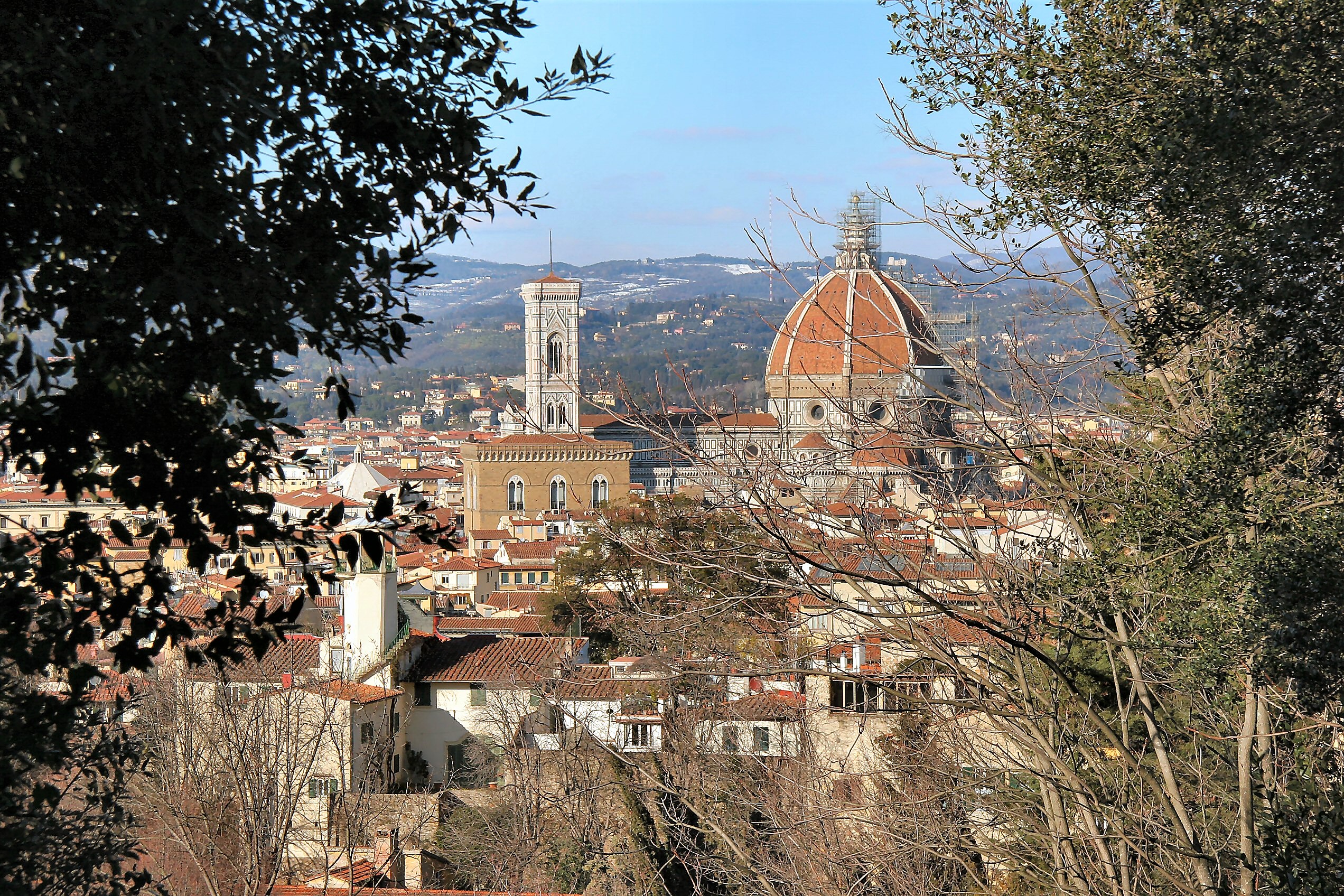
The Duomo and Campanile seen from the Boboli Gardens.
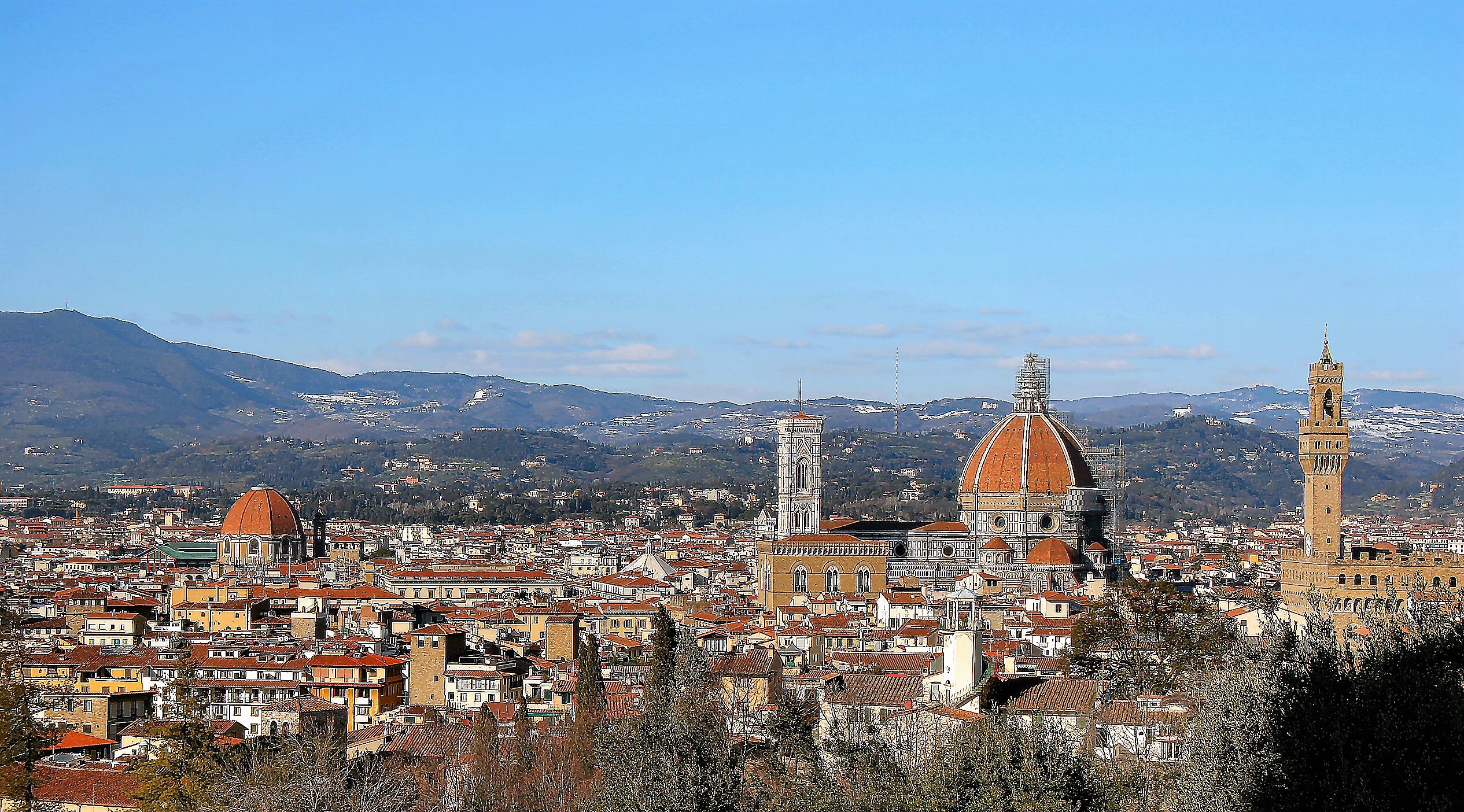
A wider view.
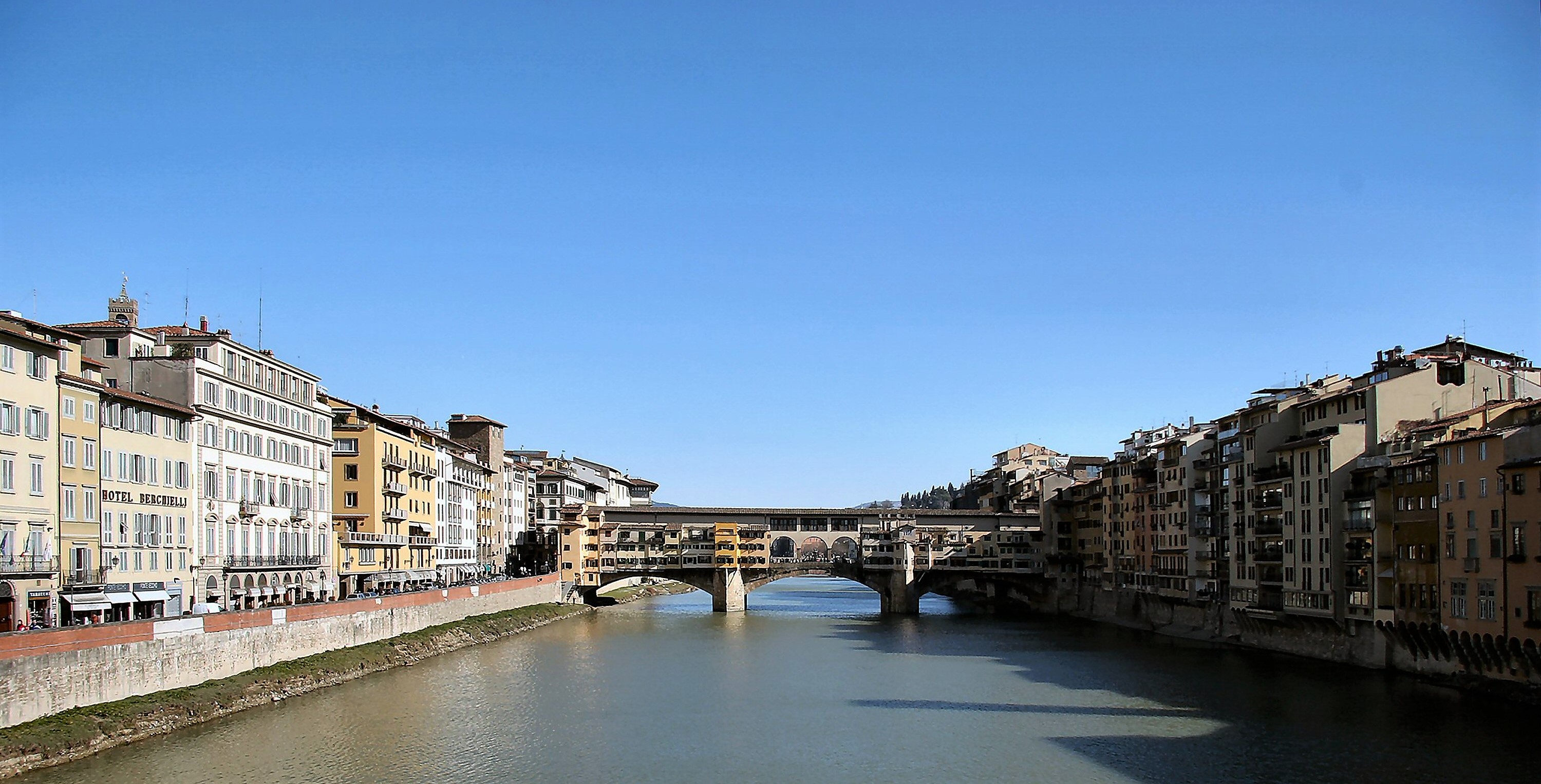
It is quite possible that these views will seem rather familiar! Indeed, they must include some of the most photographed places on Earth. Nevertheless, this was our first visit and we found Florence a very special place, even those places we had seen a thousand times before. We were lucky in that our visit coincided with a period of intensely cold, bright weather and crystal clear air.
This is the Ponte Vecchio which links the medieval core of the city to the Oltrarno district. The stone bridge of three arches was built in 1345, replacing an earlier wooden structure, and spans the Arno at its narrowest point. The old London Bridge must have looked a little like this with shops and houses built across it. The Ponte Vecchio is entirely occupied by jewellers and goldsmiths.
Close to the left bank is the Uffizi, now an art gallery but once the administrative headquarters of the Medicis. Close to the right bank, on the Oltrano side, is the Pitti Palace, the former residence of Cosimo Medici. So that he could pass from one to the other in reasonable security and privacy he had a corridor built across the bridge, linking the two.
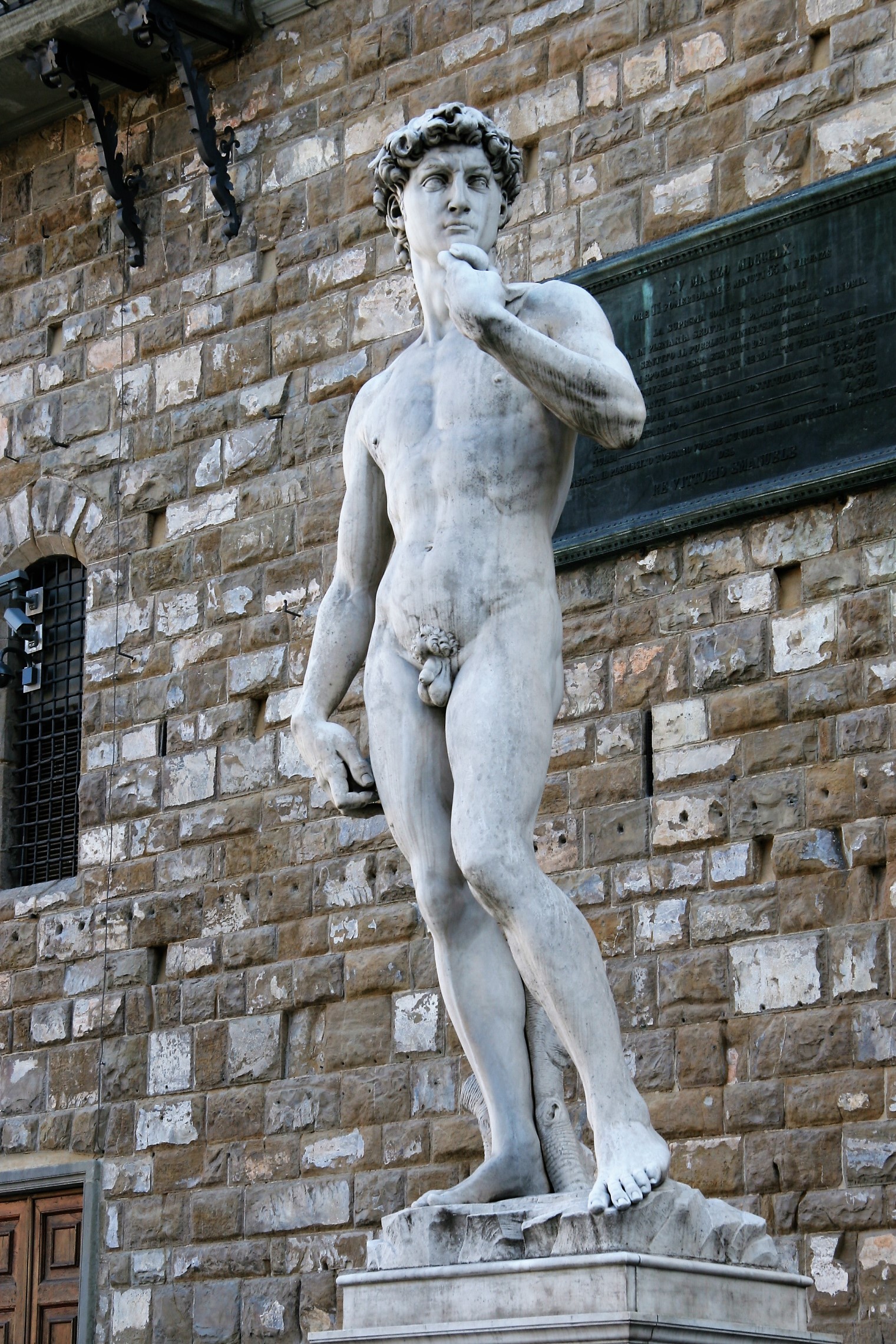
David.
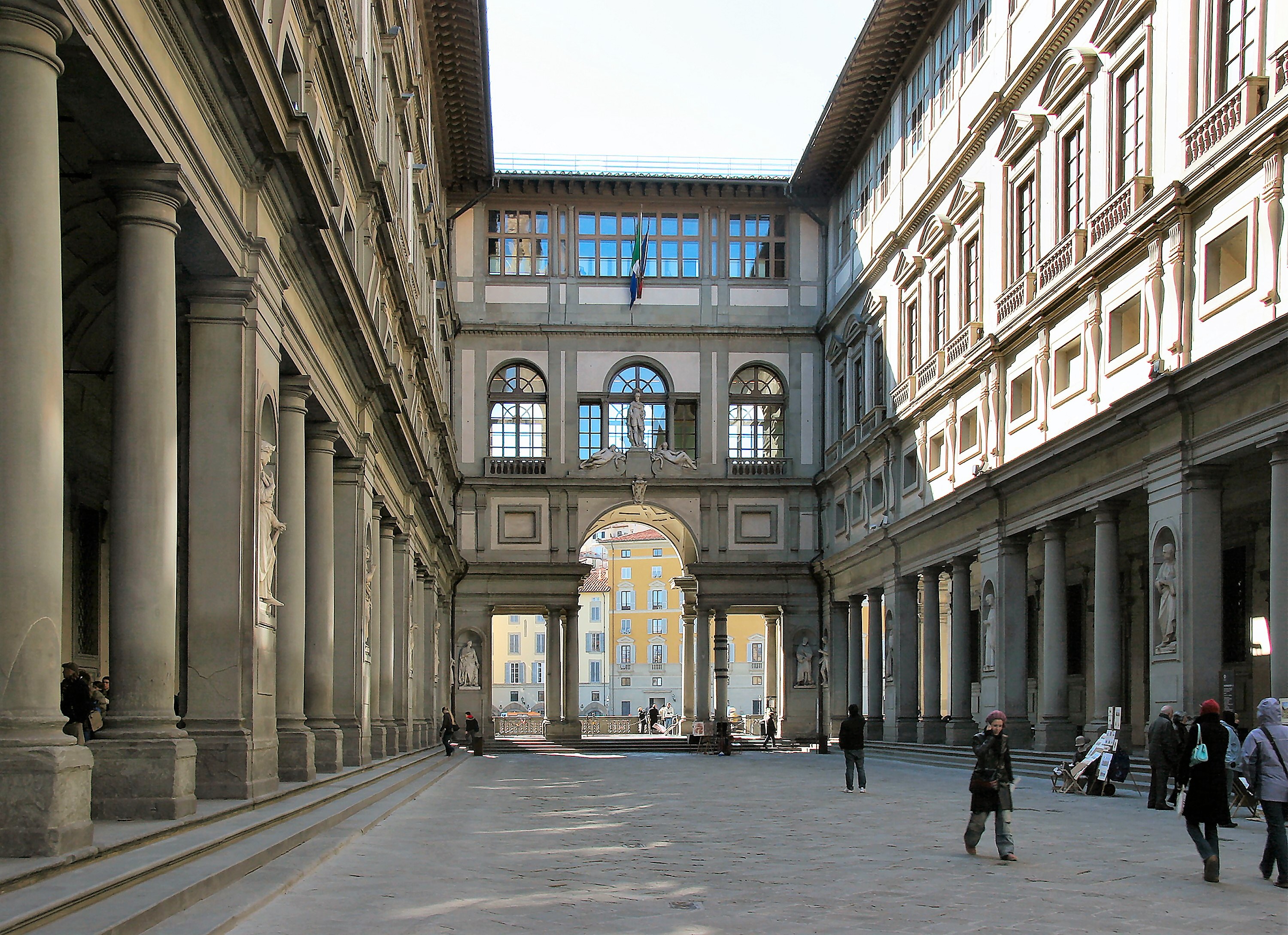
After strolling among the crowds of shoppers across the Ponte Vecchio, admiring the range of gold and jewellery in the windows, a right turn and a short walk will bring you to the arch leading into the Piazzale Degli Uffizi. This is a narrow cleft which divides the massive sombre blocks of the Uffizi and leads on to the Palazzo Vecchio with its 308 foot tower.
The Uffizi was built to provide offices for the bureaucrats who administered Florence on behalf of the Medici. Today it houses one of the world�s best collections of art the assembling of which is also largely due to the Medici.
This is often a decision point. Anyone who comes to Florence will want to visit the Uffizi, but there is so much else to see and do and the length of the queue to get in may result in a change of plan.
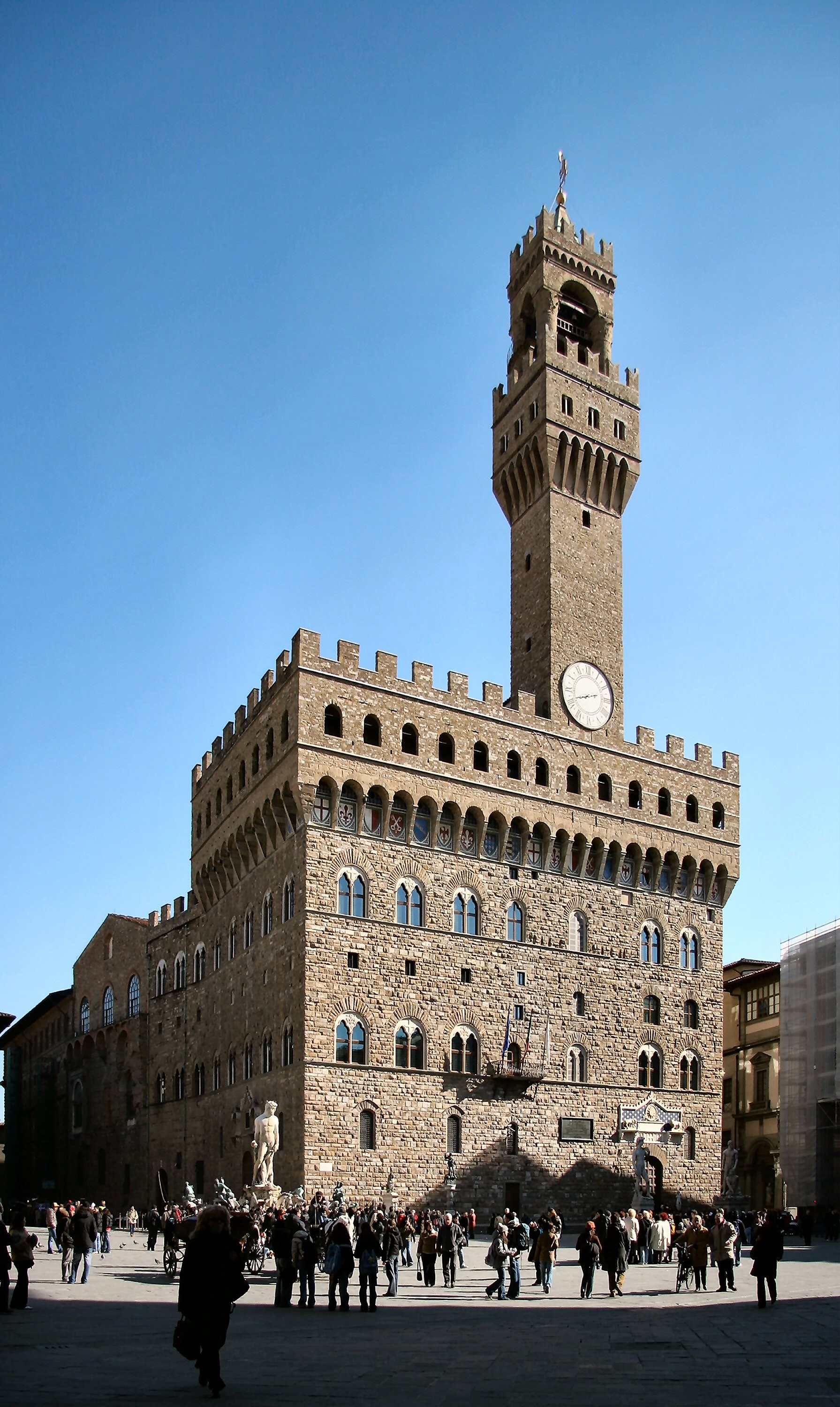
This is a view of the Palazzo Vecchio looking across the Piazza del Signoria. The last time I saw this view was in a film in which Anthony Hopkins, playing a mad villain, kills one of his many victims in a particularly grisly way, involving hanging from the balcony and disembowelment.
Since its construction in the thirteenth century its real history has been almost as colorful. Executions used to take place in the piazza below the tower. While waiting this fate and enjoying a particularly good view, the next unfortunates were imprisoned in the room at the top of the tower. Today the Palazzo serves more staidly as the city hall.
There are always large crowds in front of the Palazzo who have come to see the statue of David by Michaelangelo, sited here in 1494. What they are seeing is actually a replica, the original having been removed in 1874. To the left of the David, more prominent in this view, is Neptune's Fountain by Ammannati.
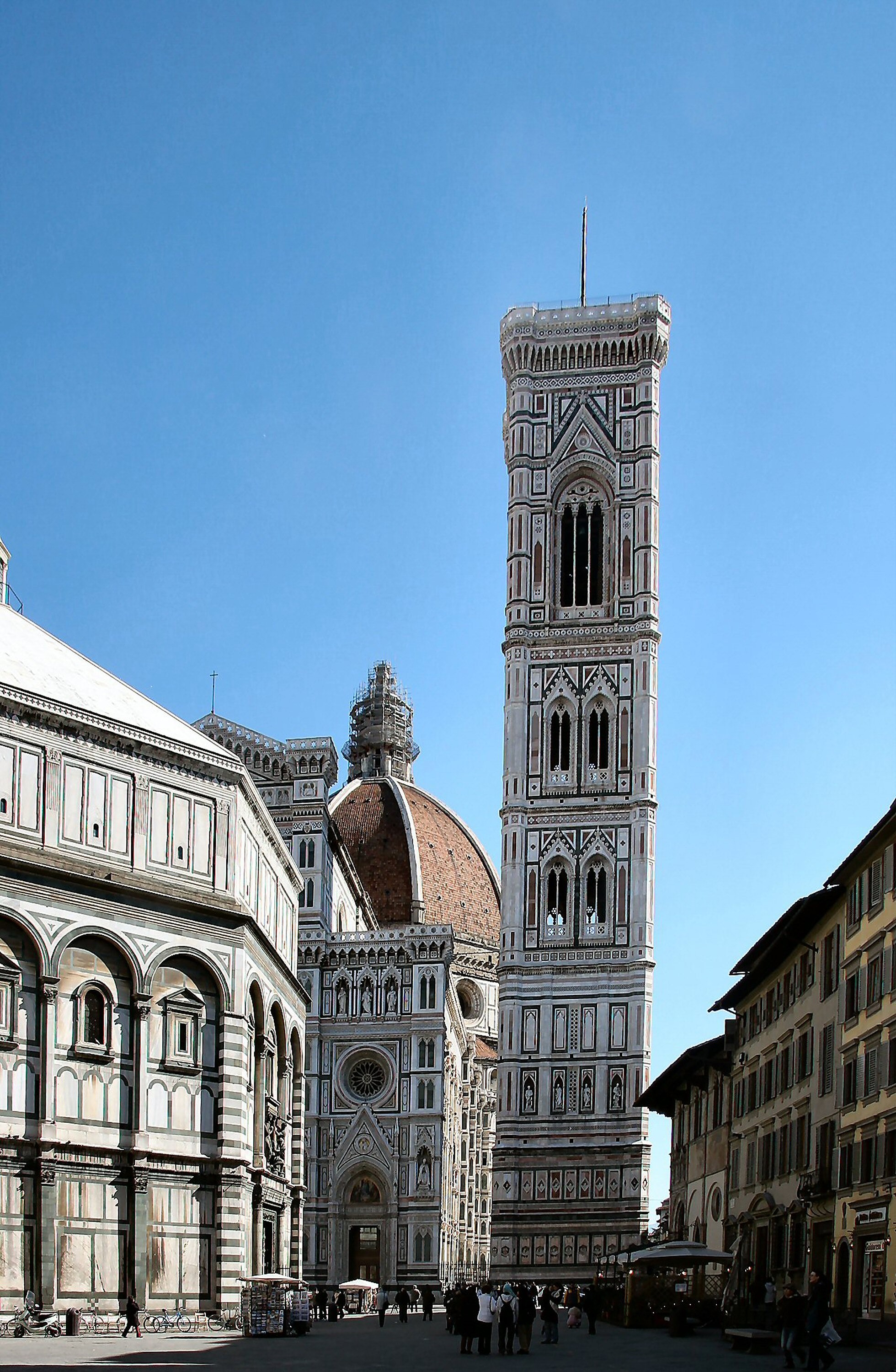
The iconic view of Florence is Brunelleschi's great brick dome on the cathedral of Santa Maria del Fiore (the Duomo). It shows up best from some other tall building or from the surrounding hills, rising above a sea of red tiled roofs.
This view is from the Piazza San Giovanni. To the left is the Baptistry, the oldest of Florence's many famous old buildings. Its origins are lost in the mists of time and it may date back as far as the sixth century. Its patterns of symmetrical arches and decoration of different coloured marbles was imitated and developed in many of the churches built after it and the result is the pleasing architectural harmony that is part of the character of Florence.
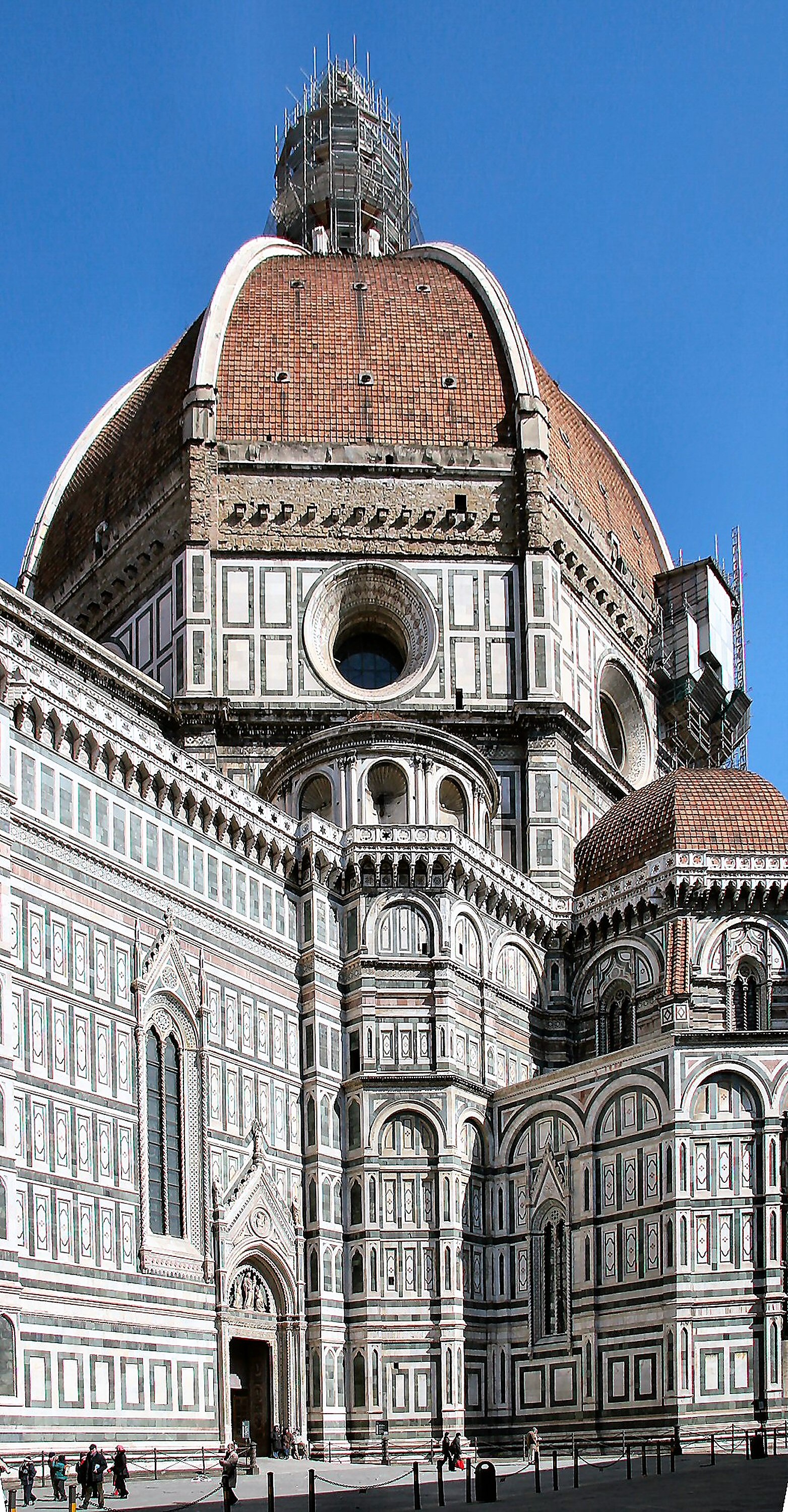
Behind the Campanile and the Baptistry is the Duomo itself. It was begun in the last decade of the thirteenth century and the finished in 1436.
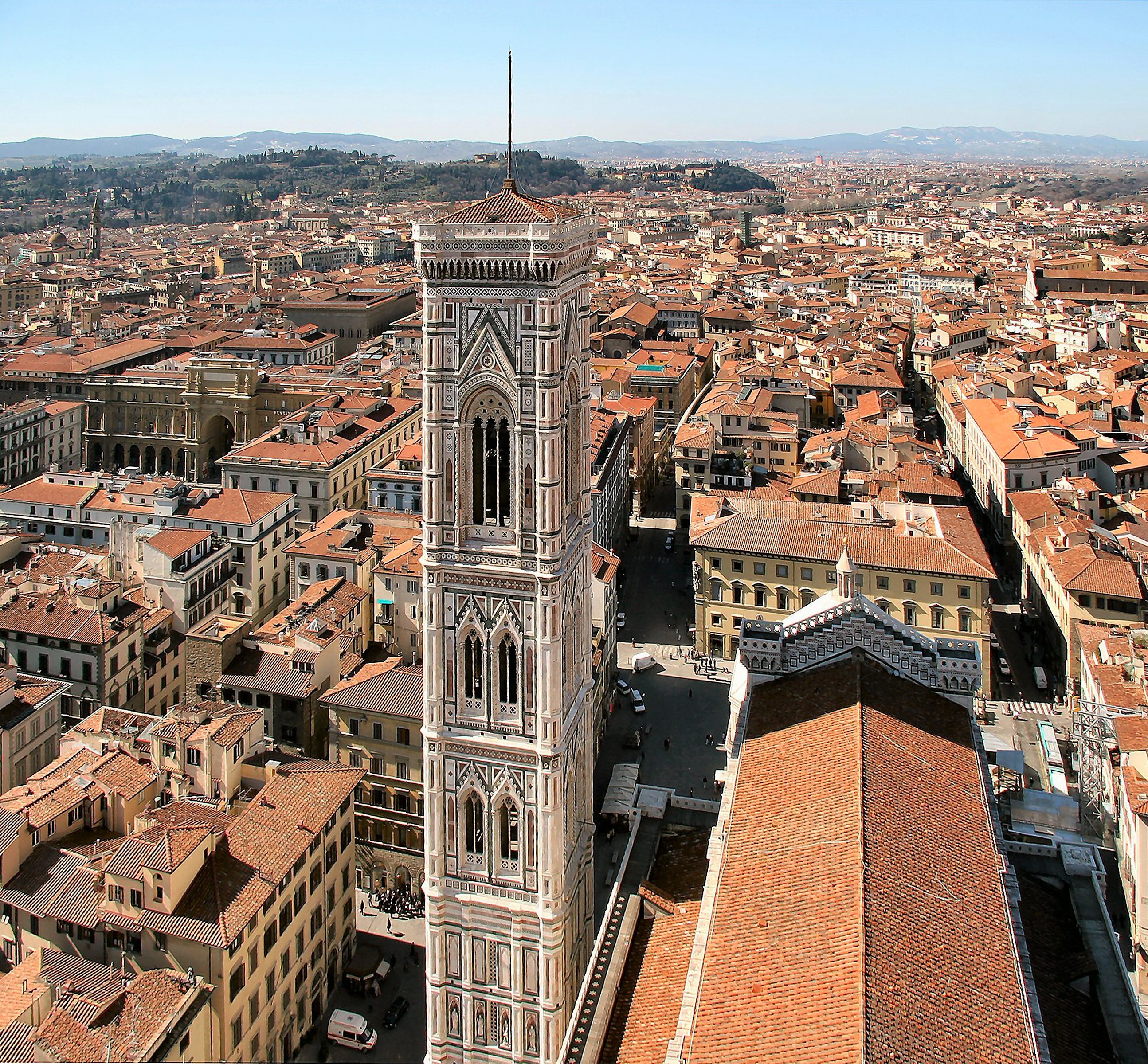
When I made the rather cramped, vertiginous ascent to the lantern above the dome I was able to look down on to the roof of the Campanile. From this side however it appears more dominant and fully 274 feet high. It was designed by Giotto and completed in 1337. The terrace at the top is open to the public and provides a fine view of the Duomo and the rest of Florence.
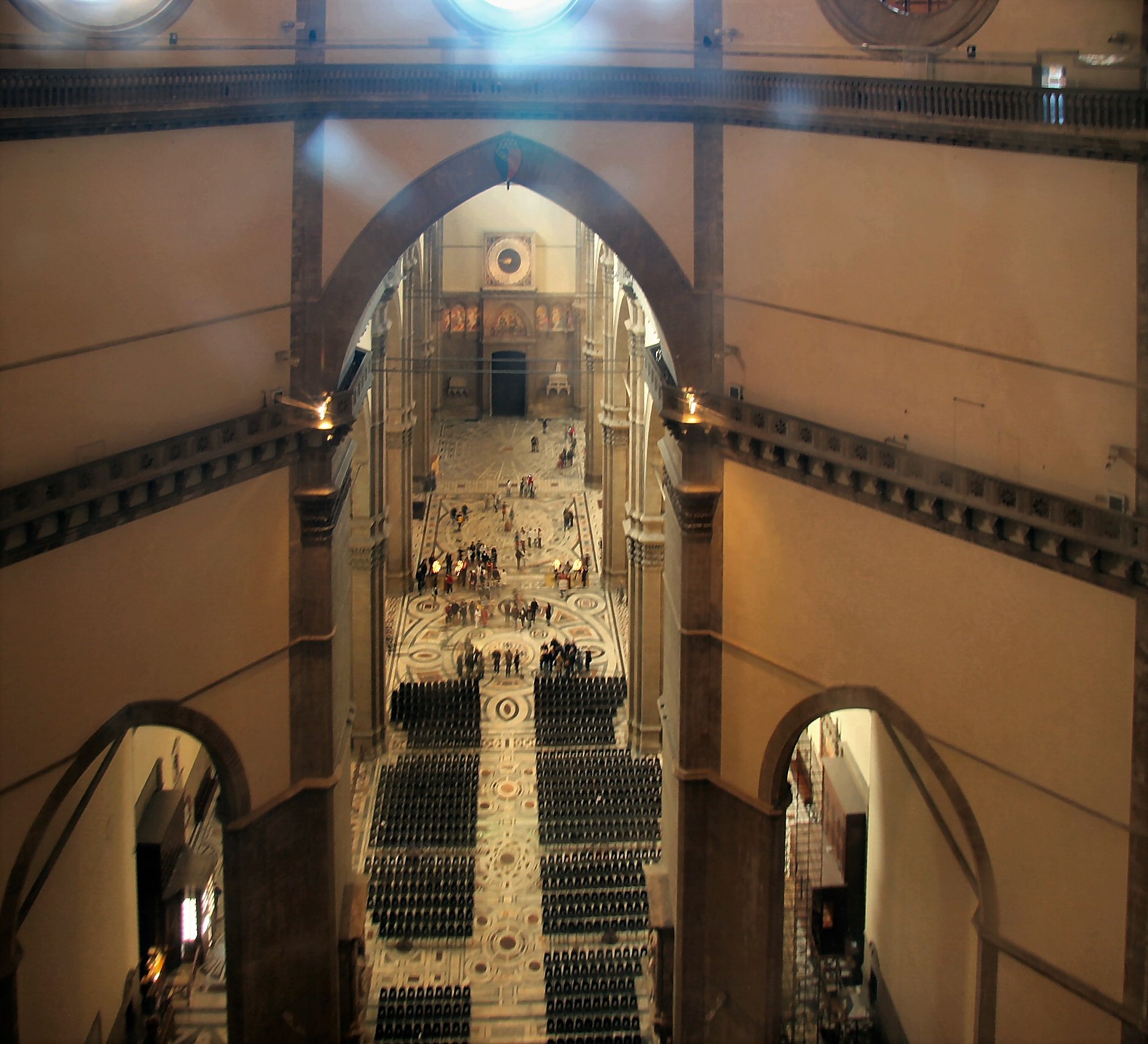

Enormous cathedrals have the ability to swallow up large crowds and still appear almost empty. The vast space under the famous dome was infused by a beautiful light entering through high round windows and reflecting back off the walls as a warm glow.
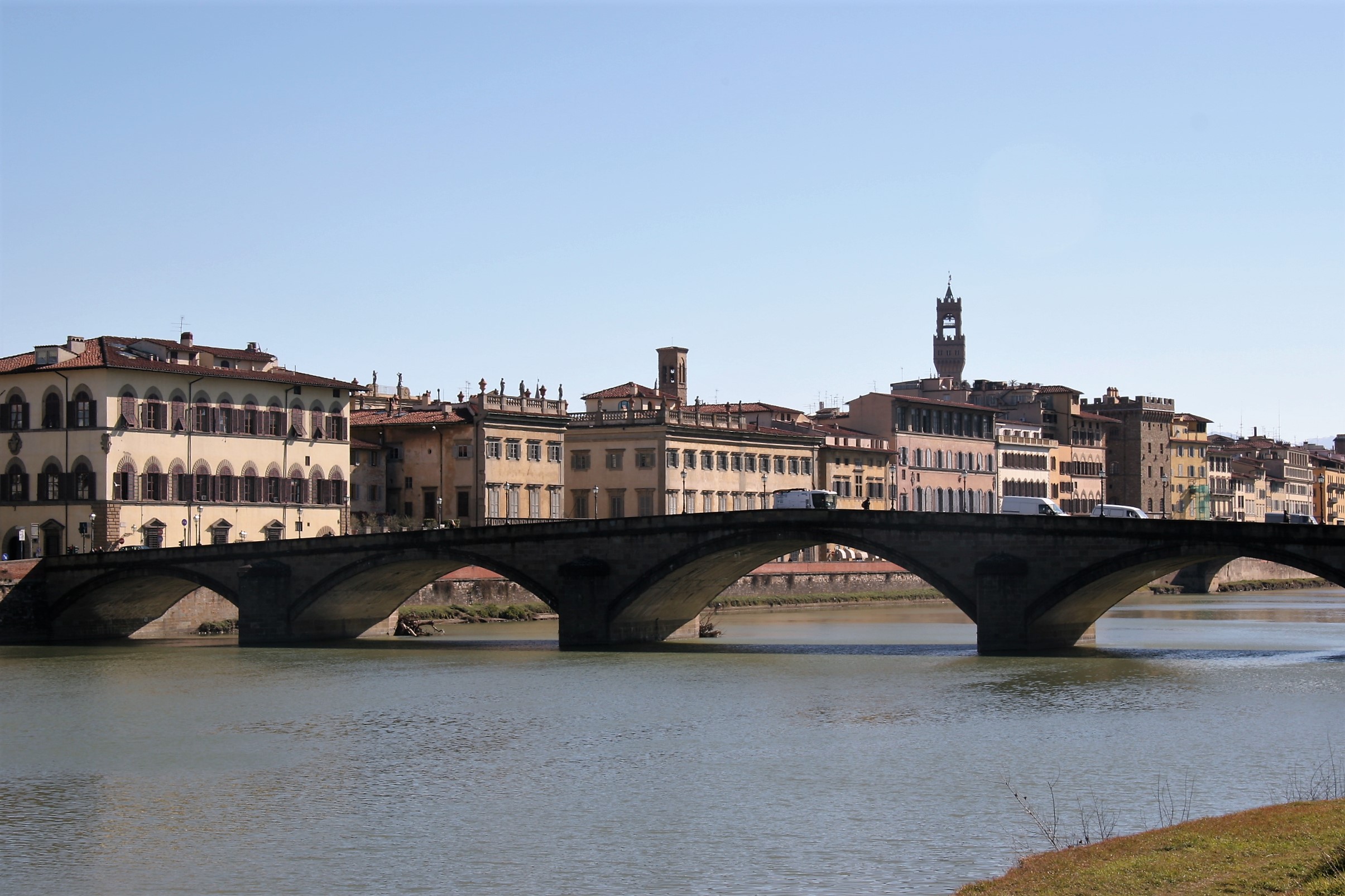
A less famous bridge across the Arno.
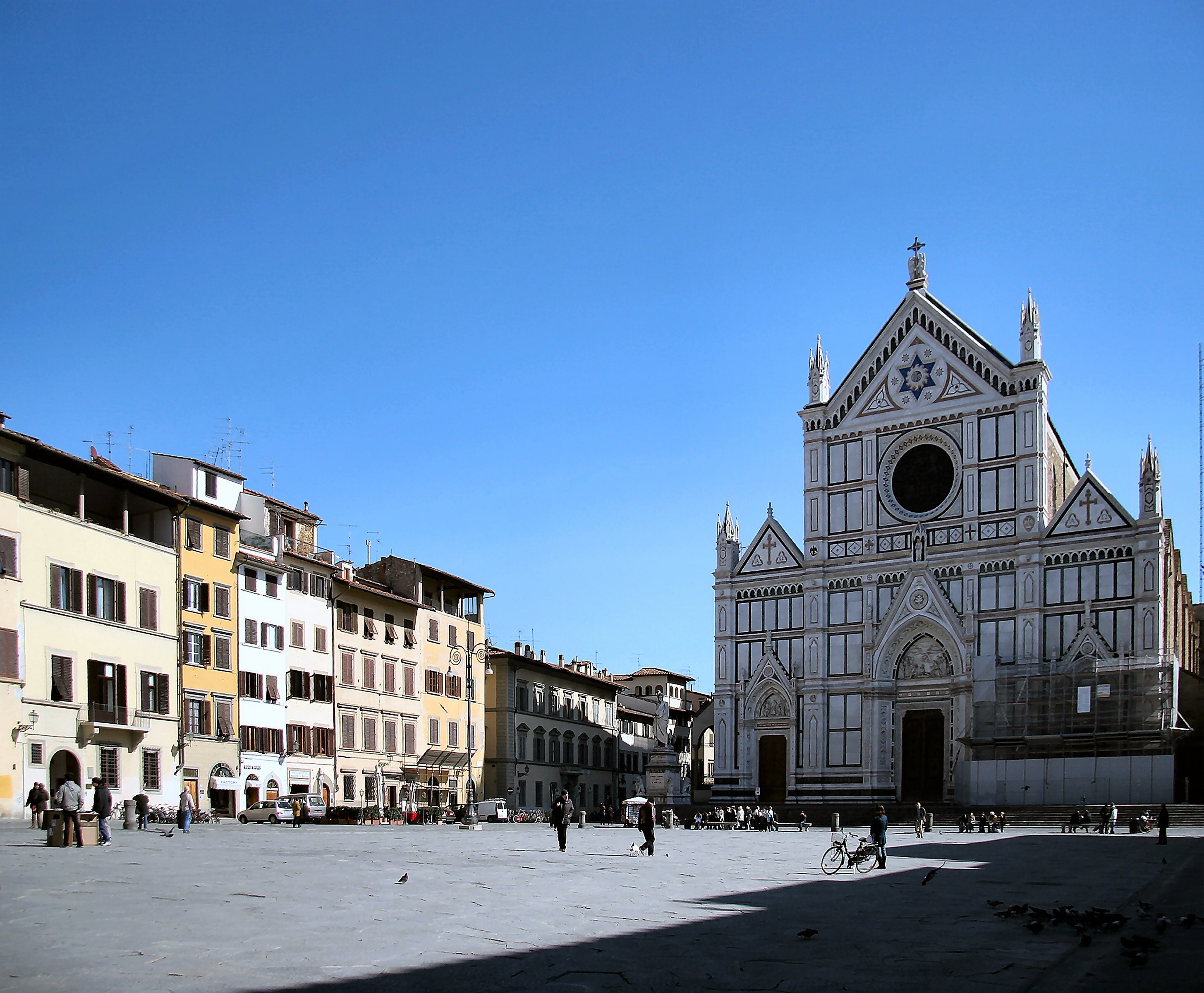
This is the church of Santa Croce seen from Piazza of the same name. This attractive square, lined by medieval houses was once the scene of sport and jousting and a violent sort of ball game continues to take place here each June.
The facade of the church is relatively modern, added in the nineteenth century, but the main structure dates from the fifteenth century. The church and attached monastery complex are Franciscan. Michaelangelo's and other notables' tombs can be found inside.
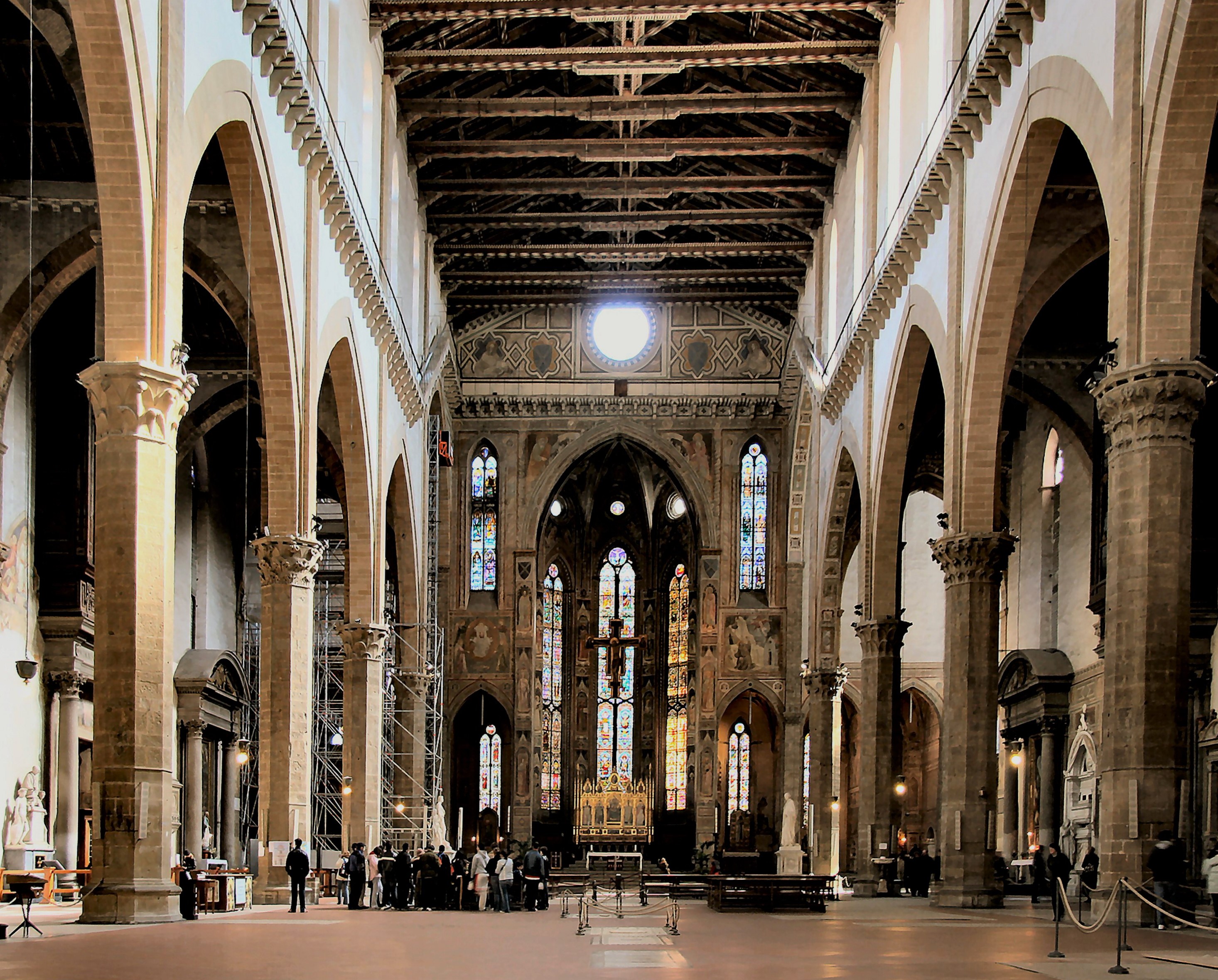
The inside of Santa Croce with wooden rafters holding up the roof and the open rectangular shape has a fleeting resemblance to the assembly hall at my old school, but this impression is quickly lost when considering all the detail and its vast size. The way the light filters through the stained glass of the sanctuary is quite magical.
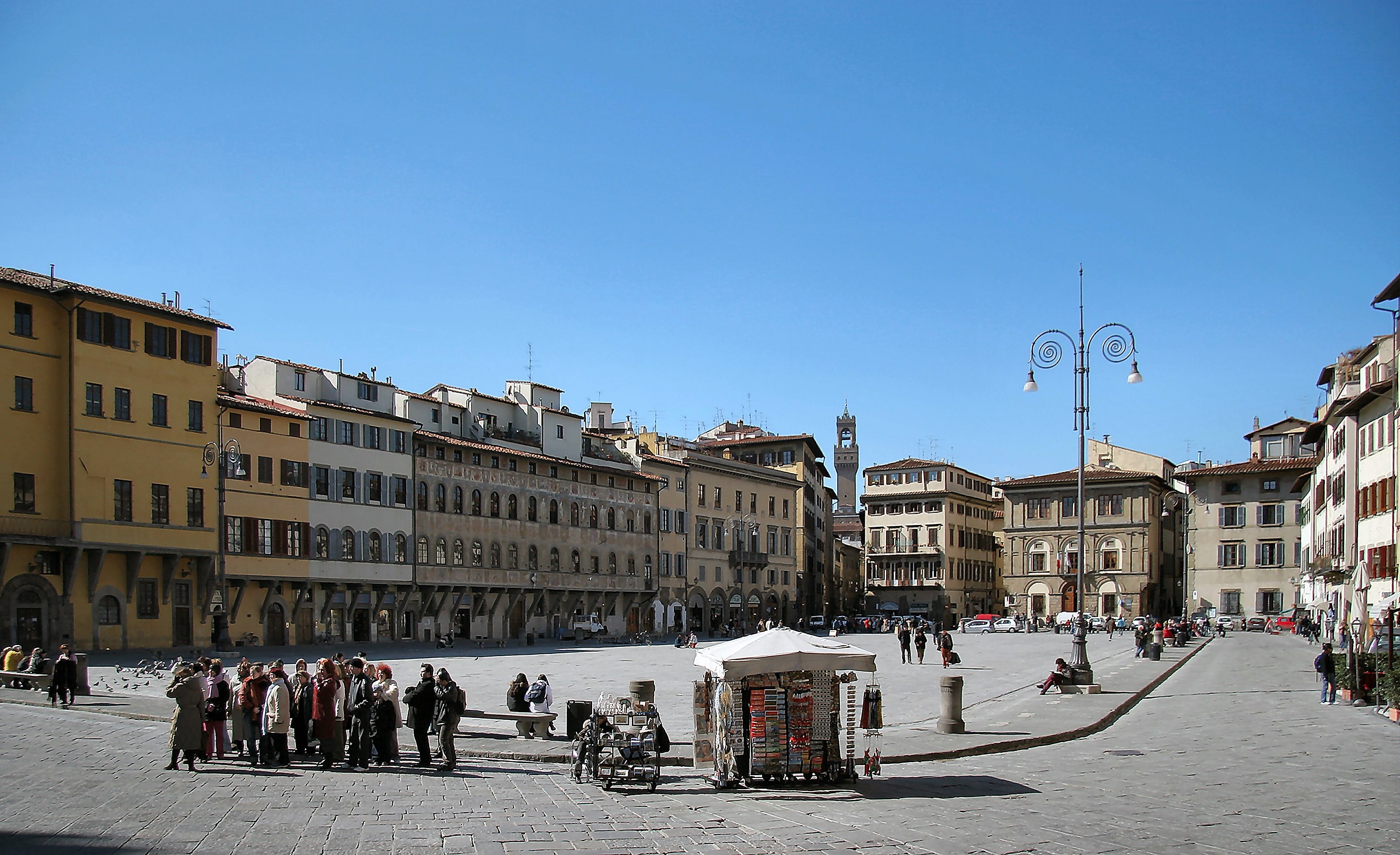
A view of Piazza Santa Croce from the church.
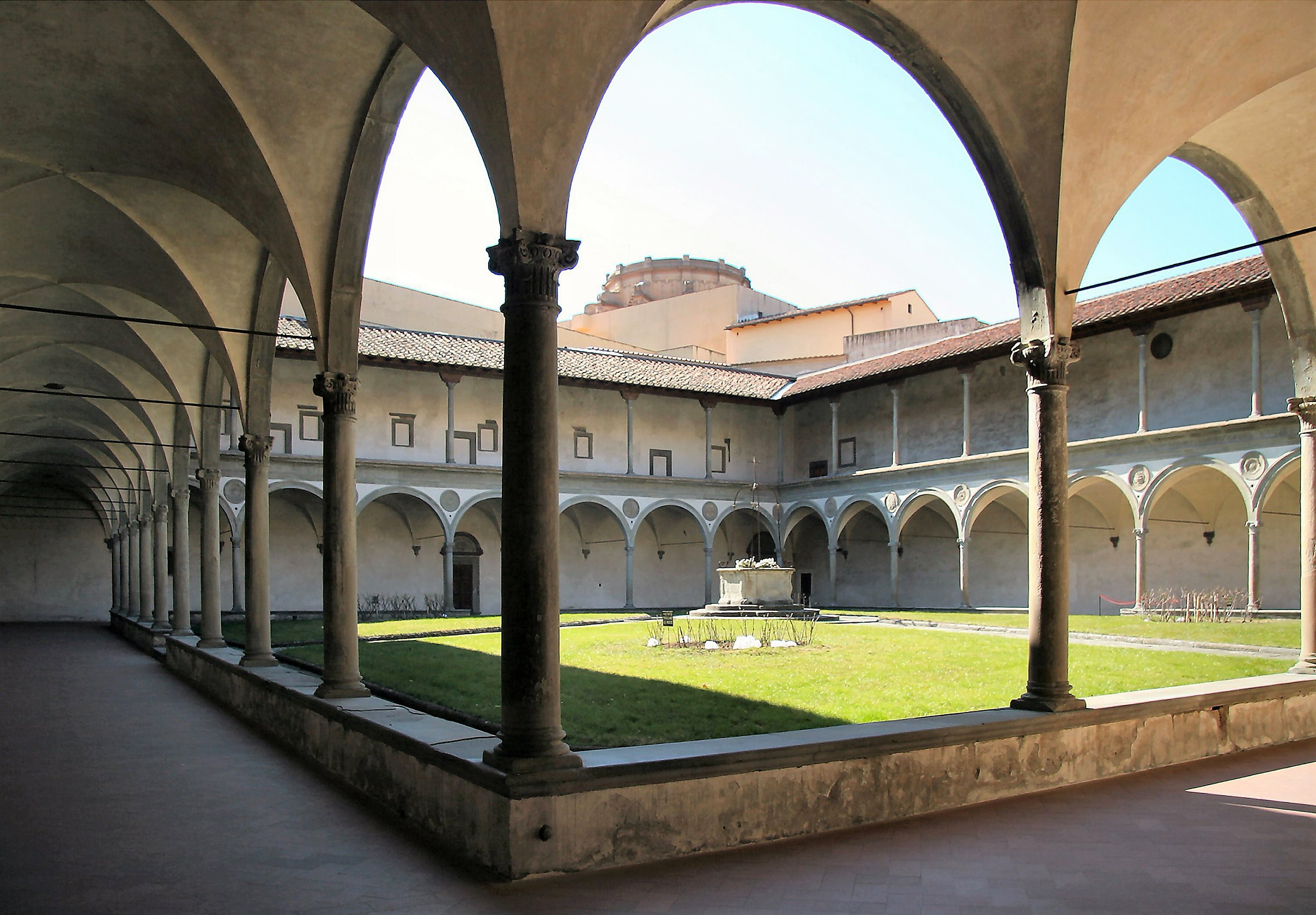
The cloisters attached to Santa Croce church were originally used by the Franciscans but are now open to the public. We found this a tranquil spot to sit while recharging our appetites for culture. For a while we had the place to ourselves. I found the symmetry and simplicity very calming and pleasing.
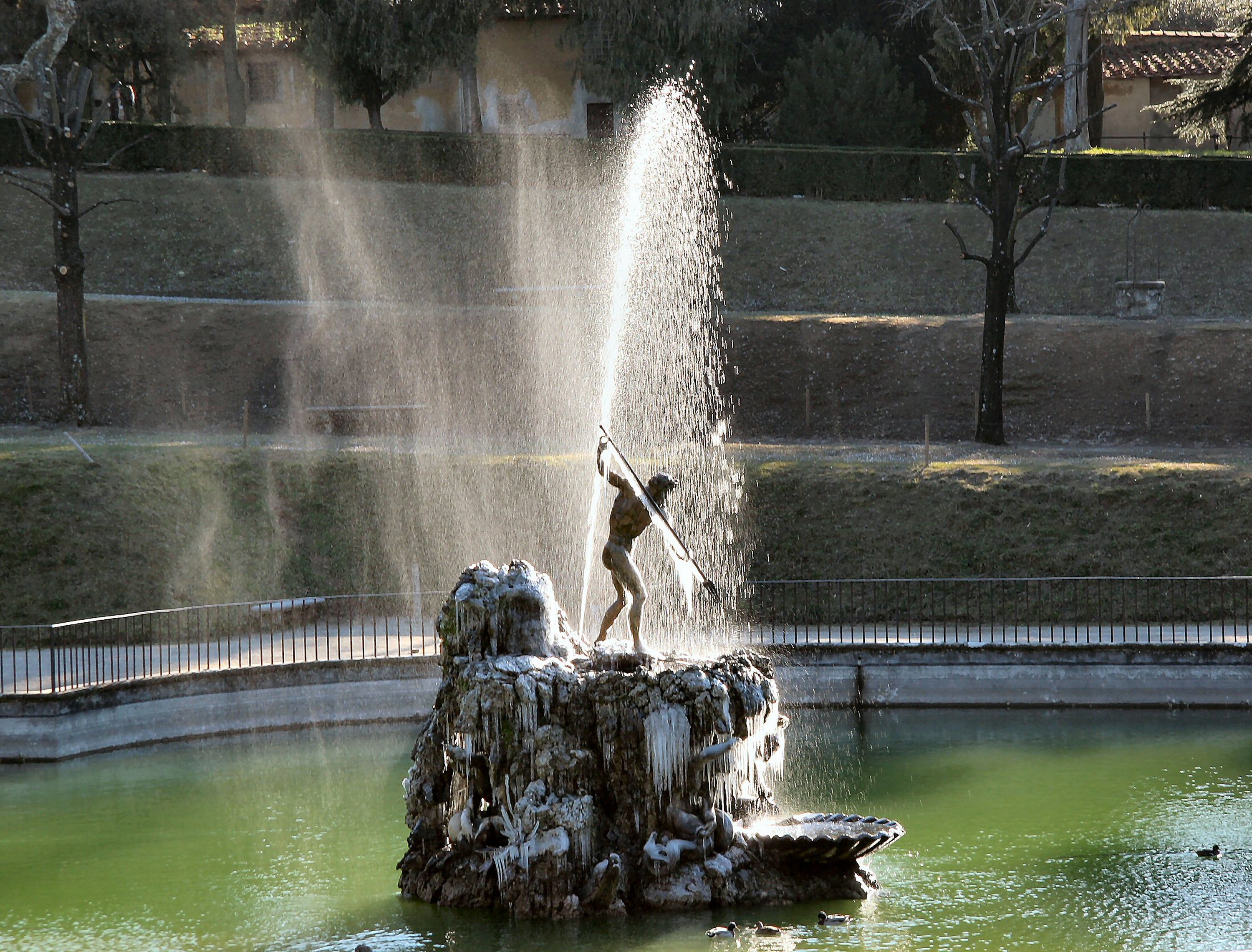
That we were enjoying the delights of Florence on a clear but freezing cold day was nowhere more emphasised than here. We had come for a stroll around the Giardino di Boboli which, being partly on a hill provided some stunning views across the city as well as being of great interest in themselves.
Among the formal terraced gardens was this Neptune fountain, beautifully though informally embellished by ice. Sometimes it is the small details that give the most pleasure.
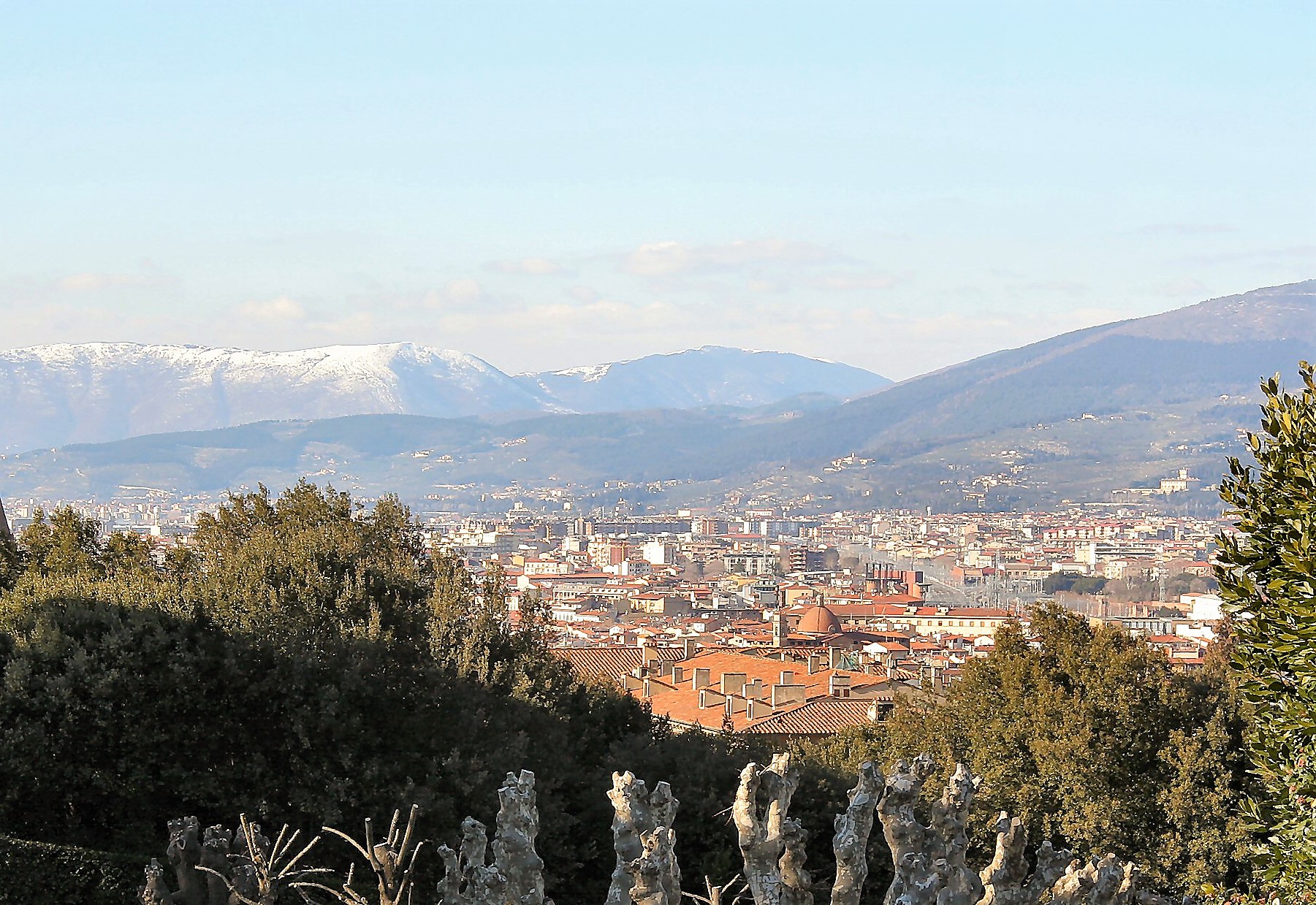
The enveloping mountains around Florence.